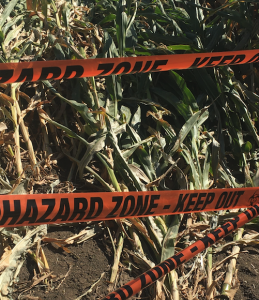Do you want to ditch the old carpeting for a new one? Carpets make our house interiors, offices, and even car interiors super cozy and bring out the perfect design to your home. However, we use these carpets without much thought on how they are manufactured and how you can discard the worn-out carpet. If you are a sustainability steward-whether at home or in workplaces and business, then you might want to consider recycle your carpeting in Los Angeles.
There are affordable carpet recycling facilities like the American Reclamation that offer carpet recycling services in Los Angeles. As the premier carpet and foam padding recycling facility with CARE’s support (Carpet America Recovery Effort), you can drop off your old carpeting at our facility at competitive rates. Alternatively, we can provide a temporary dumpster and pick up services for your residential carpets.
Should you recycle your carpeting? Below are five reasons to recycle your carpeting in Los Angeles.
Recycling your carpeting is cost-effective.
Dumping your carpeting at a local landfill may sound like an easy way to dispose of your waste carpets. However, it will cost you more time and money to remove and toss it away at a landfill, especially if you live in Los Angeles, where landfill space is expensive.
Working with a certified carpet recycling facility is cost-effective, and you will have a team of professionals to handle all the leg work for you. What’s more, carpet recycling rates remain competitively low, so it is more practical for homeowners and businesses to recycle.

When you recycle your carpeting, you protect the environment.
Needlessly filling up the landfills with old carpeting is hazardous to our environment. Statistics show that Americans dump over 3.9 million tons of carpeting each year. And despite the majority of carpet components being recyclable, only five percent of waste carpets get recycled. The larger portion of the waste carpets at the landfill emits dangerous greenhouse gases, and those that end in the waste-to-energy facilities consume more energy, which is costly.
When you recycle your carpeting, you help reduce the amounts of waste carpets and rugs that end up in the landfills. And ultimately reduce the emission of hazardous greenhouse gas to the environment and also save energy.
You help your city achieve its carpet recycling goals.
Many states and cities have carpet recycling goals to achieve. California, for example, has carpet recycling laws to help achieve these goals. The main reason for enacting such laws is to increase the recovery and diversion of carpeting material into useful products.
When you recycle your carpeting, you help your city achieve its carpet reclamation goals. Also, you can earn incentives and rewards like LEED if you are a business for recycling carpets.
It preserves natural resources.
Recycling a post-consumer carpet helps generate raw materials like fiber and plastic pellets that can manufacture new rugs, automobile products, carpet cushions, plastic lumber, carpet tiles, and so much more. Producing these products using recycled carpeting preserves the natural resources from depletion.
Recycling your carpeting in Los Angeles helps hold manufacturers responsible.
Another critical reason to recycle your carpeting is that you will help hold carpet manufacturers responsible. Did you know that some carpeting manufacturers have take-back programs? You can take back old carpets and rugs to your manufacturer for recycling. They must adhere to state laws on carpet recycling.
Additionally, choosing to recycle your carpeting in Los Angeles boosts the economy as it creates more jobs and guarantees affordable and quality products.
Are you looking for a carpet recycling facility in Los Angeles? American Reclamation uses innovative strategies to offer competitive carpet recycling services in Los Angeles. Whether you are a business, institution, or homeowner looking for professional services, we’ve got your back. Contact us!




